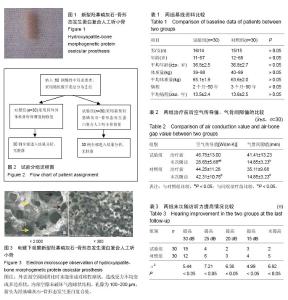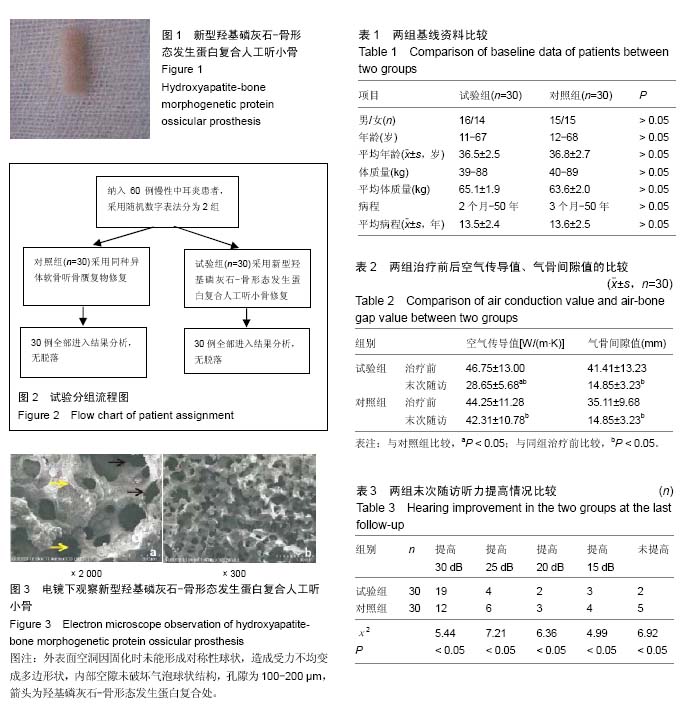| [1] Cool SM,Kenny B,Wu A,et al. Poly(3-hydroxybutyrate-co-3-hydroxyvalerate) composite biomaterials for bone tissue regeneration: in vitro performance assessed by osteoblast proliferation, osteoclast adhesion and resorption,and macrophage proinflammatory response.J Biomed Mater Res A.2007; 82(3):599-610.
[2] 蒋立新,练兵,马玉坤,等.鼓室成形术影响听力疗效相关因素分析[J].中国耳鼻喉头颈外科,2006,8(13):539-542.
[3] 刘成霞,李文,郑庆华,等.人下颌恒切牙管间峡区解剖的显微CT研究[J].华西口腔医学杂志, 2010,28(40): 177-180.
[4] 李向杰,刘娜,刘锐,等.显微CT与数字成像系统观察下颌第一前磨牙根管形态的比较研究[J].华西口腔医学杂志, 2012,30(1):57-60.
[5] 孙安科,孙靖,孙伟,等.无纺网与多孔海绵状材料作为软骨组织工程支架的适用性及体内降解性[J].中国组织工程研究,2014,18(8):1172-1178.
[6] 孙程成,蒋子栋,张凯,等.豚鼠耳蜗的显微CT技术影像学研究[J].中华医学杂志,2012,92(48):3442-3444.
[7] 孙程成,蒋子栋,张凯,等.小鼠听泡Micro-CT实验研究[J].中华耳鼻喉头颈外科杂志,2013,48(8):673-676
[8] 郭霄飞,张永红,杜美丽,等.羟基丁酸与羟基辛酸共聚物一体化骨软骨组织工程支架的制备及性能[J].中国组织工程研究,2012,16(16):2865-2868.
[9] 张宝林,李秀琴,王廷础.立用乳突皮质骨及自体砧骨行鼓室成型术远期疗效观察[J].中华耳科学杂志, 2004,1(3): 24-26.
[10] 曾立刚,李江平.人工听骨链重建材料的生物相容性及其应用特点[J].中国组织工程研究与临床康复, 2007,11(48): 9789-9792.
[11] 汪昌学,姜苏明,刘金生,等.听骨链重建术的相关解剖测量[J].汕头大学医学院学报,2007,20(3):143-145.
[12] 宋升桥.采用钛质人工听骨行听骨链重建 27 例临床分析[J].中华耳科学杂志,2011,2(3):184-186.
[13] 陆源,胡敏,何玮.重建听骨链的鼓室成形术临床结果分析58例[J].中国社区医师:医学专业, 2011,13(24): 162-163.
[14] Dunham BP,Koch RJ.Basic fibroblast growth factor and insulinlike growth factor I support the growth of human septal chondrocytes in a serum-free environment.Arch Otolaryngol Head Neck Surg. 1998;124(12):1325-1330.
[15] 杨亚冬,张文元,房国坚,等.巢式PCR扩增性别决定基因序列检测兔骨髓间充质干细胞移植治疗关节软骨缺损的修复组织来源[J].中国组织工程研究与临床康复, 2007, 11(37):7341-7344.
[16] Wang D,Cao S,Sun Z,et al.Transparency VR reconstruction of 64-slice spiral CT in the inner ear malformation diagnosis.Prog Mod Biomed. 2010; 10(15):2872-2873.
[17] Che JH,Zhang Z,Li GZ,et al.Application of tissue-engineered cartilage with BMP-7 gene to Repair knee joint cartilage injury in rabbits.Knee Surg Sports Traumatol Arthrosc.2010;18(4):496-503.
[18] Chen Y,Han Y,Lu LJ,et al.Comparative analysis of the ossicular chain reconstruction in 60 patients with different materials.Chin J Otol.2010;8(2):240.
[19] 郭敛容,胡洪义,苏永进.开放式鼓室成形术听力重建效果的分析[J].中国耳鼻咽喉颅底外科杂志, 2011,17(4): 286-288.
[20] 张治华,黄琦,杨军,等.羟基磷灰石与钛合金听骨赝合物应用于胆脂瘤中耳炎听力重建效果比较[J].听力学及言语疾病杂志,2010,18(3):208-210.
[21] Us Mallouhi A,Rieger M, Czermak B,et al.Volume- rendered multid- etector Ctangiography:noninvasive follow up of patients treated with renal artery stents. AJR.2003;180:233-234.
[22] Villemagne T,Bonnard C,Accadbled F,et al.Intercalary segmental reconstruction of long bones after malignant bone tumor resection using primary methyl methacrylate cement spacer interposition and secondary bone grafting:the induced membrane technique. J Pediatr Orthop.2011;5:570-576.
[23] Mantei T,Chatzimichalis M,Sim JH,et al. Ossiculoplasty with total ossicular replacement prosthesis and Omega Connector: early clinical results and functional measurements.Otol Neurotol.2011;32(7):1102-1107.
[24] 朱军,王艳萍. 1988-1992 年全国先天性无耳和小耳畸形发病率的抽样调查[J].中华耳鼻咽喉科杂志, 2000,35(1): 62-65.
[25] 杜兵,陈巨峰,符志峰.计算机辅助设计与制作在磁性固位分体式上颌骨赝复体修复这种的应用[J].中华口腔医学研究杂志电子版,2011,2(5):178-183.
[26] 王鸿南,吴玮,费军.螺旋 CT多平面重建在先天性小耳畸形外耳道及中耳成形术中的应用[J].中华耳科学杂志, 2011,9(2):149-152.
[27] Zhao H,Wu YN,Hwang M,et al. Changes of calf muscle-tendon bio- mechanical properties induced by passive-stretching and active-movement training in children with cerebral palsy. Appl Physiol. 2011;111(2): 435-442.
[28] 杨想春,闫锐,董季平,等.先天性外中耳畸形面神经管乳突段前位 MSCT 研究[J].实用放射学杂志, 2014,30(1): 49-51.
[29] Tekes A,Ishman SL,Baugher KM,et al.Does microtia predict severity of temporal bone CT abnormalities in children with persistent conductive hearing loss?J Neuroradiol.2013;40(3):192-197.
[30] Jin L,Hao S,Fu Y,et al.Clinical analysis based on 208 patients with microtia(especially reviewed oculo- auriculo-vertebral spectrum,hearing test,CT scan). Turk J Pediatr.2010;52(6):582-587.
[31] 杨仕明,李佳楠,焦青山.人工听觉植入技术-耳聋外科治疗的新革命[J].中华耳科学杂志,2013,11(2):171-174.
[32] Linder T,Schlegel C,Demin N,et al.Active middle ear implants in patients undergoing subtotal petrosectomy: new application for the Vibrant Soundbridge device and its implication for the lateral cranium base surgery. Otol Neurotol.2009;30:41-47.
[33] 肖红俊,区建国,许由,等.神经纤维瘤病Ⅱ型与听觉脑干植入[J].听力学及言语疾病杂志,2006,14(1): 27-30.
[34] 张国平,李永新.一侧人工耳蜗对侧助听器双模式聆听效果的研究进展[J].听力学及言语疾病杂志, 2011,19(5): 397.
[35] Colletti L,Mandal M,Colletti V.Long-term outcome of round window Vibrant SoundBridge implantation in extensive ossicular chain defects.Otolaryngol Head Neck Surg.2013;149(1):134-141.
[36] Habib MG,Waltzman SB,Tajudeen B,et al.Speech production intelligibility of early implanted pediatric cochlear implant users.Int J Pediatr Otorhinolaryngol. 2010;74: 855-859.
[37] Leigh J,Dettman S,Dowell R,et al.Communication develop-ment in children who receive a cochlear implant by 12 months of age.Otol Neurotol. 2013; 34(3):443-450.
[38] 简奕娈,郭丽霞,孔少颜,等.结核性分泌性中耳炎的临床特征及不同耳浴法辅助治疗的疗效观察[J].实用医学杂志, 2012,28(15):2567-2569.
[39] 董雅萌,单钜潮,蒋虹,等.开放式乳突根治术联合耳甲腔成形、乳突腔填充术治疗胆脂瘤型分泌性中耳炎[J].山东医药,2011,51(42):47-48.
[40] 许杰,邵莉莉,王伟,等.鼓室成形术联合乳突根治术治疗胆脂瘤分泌性中耳炎32例[J].中国老年学杂志, 2012, 32(24): 5586-5587. |

